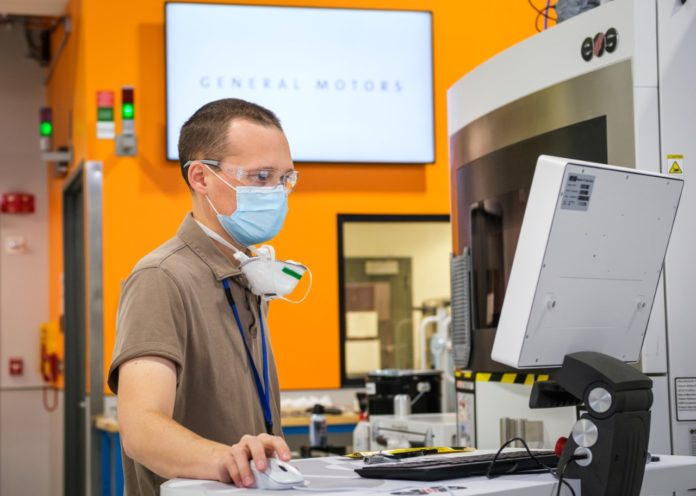
The car manufacturer aims to increase agility and speed
General Motors has opened a 15,000-square-foot (1394 m2) Additive Manufacturing Center, a facility dedicated to industrialize 3D printing technology in the automotive industry. Named Additive Industrialization Center (AIC), the center confirms GM’s expertise and increased investment in 3D printing over the last several years.
“The core component of GM’s transformation is becoming a more agile, innovative company, and 3D printing will play a critical role in that mission,” said Audley Brown, GM director of Additive Design and Materials Engineering. “Compared to traditional processes, 3D printing can produce parts in a matter of days versus weeks or months at a significantly lower cost.”
The comprehensive facility includes 24 3D printers, which create polymer and metal solutions. GM’s additive design and manufacturing team leverages a number of processes at the AIC, including selective laser sintering, selective laser melting, Multi-Jet Fusion and fused deposition modeling.
The AIC is intended to validate additive technologies and applications, with frequent pivots to evolving additive machinery and equipment. GM Ventures and GM R&D are collaborative partners with the AIC, supporting a holistic, integrated, enterprise approach to adopting accelerated product development and tooling.
Earlier this year, GM shared how 3D printing played a critical role in the company’s transition from making vehicles to medical devices in a matter of days, and how 3D-printed parts support rigorous motorsports competitions. These same processes are also transforming the company’s operations.
“GM is increasingly applying the benefits of 3D printing, from prototype development to manufacturing tooling and production vehicles,” said Ron Daul, GM director of Additive Manufacturing and Polymer Centers. “With the opening of the AIC, we’ll continue to accelerate adoption of this technology across the organization.”
Functional prototypes, manufacturing and tooling as well as production will drive the use of AM technologies within this facility.
As a reminder, many of the parts the AIC produces are functional prototypes used on pre-production vehicles in various testing environments. Early integration vehicles and test benches are often equipped with 3D-printed parts that can undergo the same testing as a conventionally tooled part.
3D printing functional prototypes can help eliminate expensive early tooling costs. As a result, engineers have the ability to iterate quickly, make design changes and reduce development times. For example, the team 3D printed the brake cooling ducts used for the development of the Chevrolet Corvette. The 3D-printed ducts saved nine weeks of development and reduced costs by over 60 percent in the process.
Furthermore, GM is also producing a significant number of 3D-printed tools used for assembling vehicles. Manufacturing tooling comes in many shapes and forms, such as hand-apply tools, automation components and rapid-response solutions for production site launches.
For the launch of GM’s all-new full-size SUVs for instance, the team 3D printed nearly 100 hand tools for the body shop at Arlington Assembly. Typically, these tools would be made of aluminum, weighing anywhere from 10 to 40 pounds. The new designs, constructed with a nylon carbon fiber composite, weigh as little as three pounds and virtually eliminated the lead time for ordering part changes.
“3D printing the body shop tools at Arlington saved more than two months in tooling construction,” said Daul. “This is at the critical time when we are changing the plant over to launch the new models. Ultimately, 3D printing helps accelerate new vehicle launches like our full-size SUVs.”
With the AIC, GM is making its 3D-printing capability more sophisticated and responsive across its global manufacturing facilities.
Lastly, a perfect example that illustrates the company’s production activities is the recent announcement of Cadillac that confirms that the CT4-V Blackwing and CT5-V Blackwing will be the first GM production vehicles to have 3D-printed parts, including an emblem on the manual shifter knob, an electrical harness bracket and two HVAC ducts.
Remember, you can post free of charge job opportunities in the AM Industry on 3D ADEPT Media or look for a job via our job board. Make sure to follow us on our social networks and subscribe to our weekly newsletter : Facebook, Twitter, LinkedIn & Instagram ! If you want to be featured in the next issue of our digital magazine or if you hear a story that needs to be heard, make sure to send it to contact@3dadept.com





